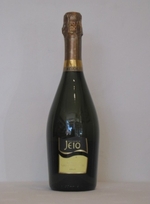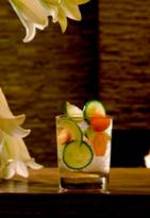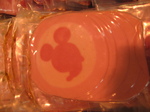On yesterday’s Gourmet Club radio broadcast on SignOnRadio.com, my colleague wine writer Robert Whitley shared his recent experiences in the land of Prosecco. That’s the Italian word for sparkling wine and it’s popping up on more and more menus every day. 
Actually, the Italians, bless their thirsty souls, have three words for what the French call Champagne. Asti (which used to be known as Asti Spumante) comes from the moscato grapes of the Piedmont region and is aromatic and usually pretty sweet.
Franciacorta, from the Lombardy Lakes district, is Italy’s sparkling star. It’s made in large part from Chardonnay grapes, in the classic methode champenoise style, which is to say the same way that French Champagne is made. That involves fermenting in the bottles as opposed to the steel tanks of Asti.
But it’s Prosecco that has captured the attention of sophisticated tipplers around the world.
Whitley raved about two particularly delicious Proseccos he found on his visit to the Veneto area, just north of Venice. He praised their elegance, crispness, low acidity and value. A good Prosecco can be had for about $14, with even the best, vineyard-designate Proseccos costing under $25.
Adami Prosecco. The Web site WineLibrary.com made my mouth water with its description: “Moderately fine, persistent, and frothy mousse. Lovely, elegant scents of green apples, white wildflowers, minerals, and glazed almonds.” It’s widely available for about $15.
Jeio Bisol Prosecco Brut costs about $14 and offers soft fruity apple and pear scents, elegant small bubbles and a creamy mouthfeel. It goes with pretty much any food you can dream up on a night when you’re in the mood for Italian-style romance.
A simple glass of Prosecco is a fine thing, indeed. But in my recent travels in Europe, I found that Prosecco is like the basic little black dress. It just loves to be dressed up.
I found some exciting examples of this type of “gilding the lily” at Cyprianerhof in the weensy town of St. Cyprian, Italy. I gotta tell ya, this is not the type of place you’d expect to find a fancy-schmancy sparkling aperitif.
 The town of St. Cyprian is deep in the Tiers valley in what is called Italy’s Sud Tirol or Alto Adige, depending on whether you speak German (the former) or Italian (the latter). It’s right up against the Italy-Austria border and is known more for its stupendous mountains, luxurious meadows, and enormous population of bell-clanging cows than it is for elegant cocktails.
The town of St. Cyprian is deep in the Tiers valley in what is called Italy’s Sud Tirol or Alto Adige, depending on whether you speak German (the former) or Italian (the latter). It’s right up against the Italy-Austria border and is known more for its stupendous mountains, luxurious meadows, and enormous population of bell-clanging cows than it is for elegant cocktails.
Yet, the Cyprianerhof, a small, 30-year old, family-run hotel that was fully modernized last fall, offers a tantalizing menu of chic and delicious ways to start a meal. (It also offers spectacular views, comfortable rooms, unbeatable hospitality and a daily hike/climb in the Dolomites led by a professional mountain guide.)
The simplest aperitif, the Rossini, consists of Prosecco and crushed fresh raspberries. Another, the Spritz Aperol, is a blend of Prosecco, a twisted orange slice and Aperol, a fascinating Italian aperitif made from bitter orange, blossoms of the gentian flower, rhubarb and cinchona (a shrub prized for its bark).
The Riva Leggero aperitif is the epitome of light and bright: Just a hint of dry white vermouth, a few fresh mint leaves, a couple drops of fresh lime juice and a splash of Prosecco…swirled together with ice in an old-fashioned glass. There’s no better palate-perker-upper.
But my favorite was the Verona Rosso, a captivating mix of Campari, Aperol, lemon soda and Prosecco that I plan to make at home all summer long.
If you have a special way of jazzing up Prosecco, I'd like to hear about it. It's a long summer ahead.



















